#en.wikipedia.org/wiki/Women In World War II
Explore tagged Tumblr posts
Text
“Why Your DOPP Kit Will Change Your Life and How to Make The Most of It?”

Are you tired of cluttered and messy bathroom counters? Or frustrated with not being able to find your toiletries when you need them? Look no further than the DOPP Kit. This small but mighty travel accessory has the power to change your life and make traveling so much easier. In this article, we will explore the benefits of using a DOPP kit and give you tips on how to make the most of it.
The History of the DOPP Kit
The DOPP kit, also known as a toiletry bag, was first introduced in the early 20th century by Charles Doppelt, a leather craftsman. The kit gained popularity during World War II when soldiers were issued them as part of their standard gear. Since then, the DOPP kit has become a staple travel accessory for men, women, and children alike.
The Benefits of Using a DOPP Kit
Organization
The most obvious benefit of using a DOPP kit is organization. All of your toiletries are in one place, making it easy to find what you need. No more digging through a messy bag searching for your toothbrush or your contact lens case.
Easy to Pack
DOPP kits are also compact and easy to pack. They take up minimal space in your suitcase and can be easily tucked away in a corner or packed in-between clothes. Plus, many DOPP kits are made with waterproof materials, protecting your toiletries from any potential spills or leaks.
Versatility
DOPP kits can also be used for more than just toiletries. They make great organizers for tech accessories like chargers and cables, or even as a small first aid kit.
Sustainability
Using a DOPP kit can also contribute to a more sustainable lifestyle. Instead of using disposable travel-sized products, you can purchase larger, eco-friendly products and transfer them to your DOPP kit. This reduces waste and saves you money in the long run.
How to Make the Most of Your DOPP Kit
Choosing the Right DOPP Kit
When selecting a DOPP kit, consider the size and how much you will need to pack. Look for one with enough compartments to keep your items organized. Also, consider the material. If you plan to use it for air travel, look for a clear, TSA-approved bag.
Maximizing Storage Space
Use packing cubes or compression bags to free up space in your DOPP kit. Fold clothes neatly and place them at the bottom of the kit. Use the top compartment for smaller items like a toothbrush or razor.
Packing Tips
Pack only what you need, and consider investing in travel-sized items to save space. You can also repurpose contact lens cases to hold creams or ointments.
Conclusion
In conclusion, a DOPP kit is a must-have travel accessory. Its benefits extend beyond just organization and easy packing, and its versatility makes it a valuable tool for any traveler. By following our tips on how to make the most of your DOPP kit, you can simplify your travel routine and make traveling a stress-free experience.
Sources:
https://en.wikipedia.org/wiki/Dopp_kit
https://www.smartertravel.com/everything-you-need-to-know-about-packing-in-a-dopp-kit/
https://www.travelandleisure.com/style/travel-accessories/best-travel-toiletry-bag-for-men
Article by NoneFrom this article you can learn dopp kit.
0 notes
Text
Today's selected anniversaries: 12th February 2023
1855:
The precursor of Michigan State University in East Lansing was founded as the United States' first agricultural college. https://en.wikipedia.org/wiki/Michigan_State_University
1947:
The French fashion company Dior unveiled its New Look collection (suit pictured), which revolutionized women's dress and re-established Paris as the centre of the fashion world after World War II. https://en.wikipedia.org/wiki/Dior
2001:
The NASA space probe NEAR Shoemaker touched down on Eros, becoming the first spacecraft to land on an asteroid. https://en.wikipedia.org/wiki/NEAR_Shoemaker
2016:
In the first meeting between the leaders of the Catholic Church and the Russian Orthodox Church, Pope Francis and Patriarch Kirill of Moscow signed the Havana Declaration at José Martí International Airport in Cuba. https://en.wikipedia.org/wiki/Joint_Declaration_of_Pope_Francis_and_Patriarch_Kirill
0 notes
Text
Did you know?
Hello Everyone! Have you heard of “Rosie the Riveter”?I would think it would depend on your age group. This is a more modern clip art. Show those great tats Rosie. (tats short for tattoo, in case you didn’t know). Art work by Norman Rockwell Fine Art AmericaMetal print by Everett Fine Art America According to different articles there were 310,000 women in the U. S. aircraft industry. More…

View On WordPress
#Australia#Blogging Blogger#Canada#en.wikipedia.org/wiki/Women In World War II#Fine Art America.com#History.com#India#Italian#Many countries women were involved in WWII#Poland#Rosie the Riveter#Today in History.blog#U.S.A.#Wikipedia.org
0 notes
Quote
A pair of large tortoise-shell spectacles straddled a big beak-like nose, and he wore a heavyish blond moustache with its points trained upwards and outwards rather after the fashion made famous in the Fatherland by William Hohenzollern. In his ill-cut suit of cheap-looking serge, which he wore with a pea-green toe. Robin thought he looked altogether a typical specimen of the German of the non-commissioned office class.
Valentine Williams describes this character in The Yellow Streak, a mystery novel from 1922. Although many people tend to think of fashion as something for women, this description makes clear not only the fashion in clothing but in facial hair which rules men’s appearance. It’s not like groups men all ended up looking alike by accident.
The William Hohenzollern here is Wilhelm II, the last German Emperor who abdicated at the end of World War I in 1918. Wikipedia has a portrait which shows off the mustache style here: https://en.wikipedia.org/wiki/Wilhelm_II,_German_Emperor
Robin is our hero, an Englishman, who shares Williams’ own contempt for most things German, including this character who is not very helpful at first.
#valentine williams#1920s fashions#menswear#Mens Fashion#vintage menswear#vintage mens fashion#the yellow streak#mustache#moustache#mustache styles#wilhelmII#costume history#dress history#fashion history
7 notes
·
View notes
Text
10 MOST OVERLOOKED WOMEN IN THE HISTORY OF ARCHITECTURE: EILEEN GRAY
Editor’s Note: This article was originally posted in January 2015. Read more about the 10 Most Overlooked Women in the History of Architecture.
In 2013 ArchDaily ran a post on the 10 Most Overlooked Women in Architecture History. This post is the third in a series of mini-tributes to each of these architects. Read the previous post on Marion Mahony Griffin.
Eileen Gray began her career in Paris at the beginning of the Twentieth Century as a designer of Japanese-style lacquered screens, and would eventually become one of Europe’s most influential Modernist designers. While embracing much of the “revolutionary new theories of design,”1 Gray always remained independent and did not align herself with any particular design movement or group.2
Eileen Gray was born in Ireland in 1878; growing up, her artist father encouraged her creative talent. “He also allowed Gray to enroll at the Slade School of Art in London to study painting.”2
Gray soon tired of studies there and headed to Paris where she worked designing lacquered screens in the studio of Sugiwara, a Japanese artisan. She exhibited her screens in Paris and notice of her work earned her interior design commissions. By the early twenties Gray was designing Art Deco furniture and textiles for her clients, the most notable of these projects was “an apartment on Rue de Lota.”2
Gray’s “contribution to the 1923 Salon d’Automne was praised by fellow exhibitors including Le Corbusier and architect Robert Mallet Stevens.”1 It was architecture critic Jean Badovici, however, who became Gray’s mentor and collaborator.3 In 1926 the pair designed House E-1027 in Roquebrune-Cap-Martin, France with Gray designing the furniture. She furnished Badovici’s studio as well.2
At the end of the 1920s Gray designed her own home in Tempe à Pailla in southeastern France,3 but by the end of the 1930’s she had withdrawn into “an increasingly reclusive life”2 at her home there. Gray experienced great upheaval in her life and career during World War II. She was forced to leave her beloved home at Tempe à Pailla and lost most of her possessions stored in Saint-Tropez when the Germans bombed the area.3
After the War, Gray lived quietly in Paris, accepting the occasional commission, but dropped out of the mainstream design world. By the middle of the century her work became largely forgotten. In 1968 an article published in Domus Magazine gained new recognition for Gray’s designs.2 In the early 1970s, her last project was for Aram, “a London-based furniture store”2 to reintroduce her iconic furniture designs to market.1 “Gray died in 1976 at the age of 98.”3

Eileen Gray & Jean Badovici, House E-1027 (1926-27), Roquebrune-Cap-Martin, France. Source.
References
Aram, (2011). About the Designer: Eileen Gray. http://www.aram.co.uk/designers/eileen-gray.html#
Design Museum, (n.d.). Profile: Eileen Gray. http://designmuseum.org/designers/eileen-gray#sthash.h5VE5Xso.dpuf
Wikipedia, (2014). Eileen Gray. http://en.wikipedia.org/wiki/Eileen_Gray
0 Comments
2 notes
·
View notes
Text
Lillian Randolph

Lillian Randolph (1914/1915) – September 12, 1980) was an American actress and singer, a veteran of radio, film, and television. She worked in entertainment from the 1930s until shortly before her death. She appeared in hundreds of radio shows, motion pictures, short subjects, and television shows.
Randolph is most recognized for appearing in It's a Wonderful Life (1946), Magic (1978), and her final onscreen project, The Onion Field (1979). She prominently contributed her voice to the character Mammy Two Shoes in nineteen Tom and Jerry cartoons released between 1940 and 1952.
Born Castello Randolph in Knoxville, Tennessee, she was the younger sister of actress Amanda Randolph. The daughter of a Methodist minister and a teacher, she began her professional career singing on local radio in Cleveland and Detroit.
At Detroit's WXYZ, she was noticed by George W. Trendle, station owner and developer of The Lone Ranger. He got her into radio training courses, which paid off in roles for local radio shows.
Randolph was tutored by a Caucasian actor for three months on "racial dialect" before getting any radio roles. She moved on to Los Angeles in 1936 to work on Al Jolson's radio show, on Big Town, on the Al Pearce show, and to sing at the Club Alabam there.
Lillian and her sister Amanda were continually looking for roles to make ends meet. In 1938, she opened her home to Lena Horne, who was in California for her first movie role in The Duke Is Tops (1938); the film was so tightly budgeted, Horne had no money for a hotel. Randolph opened her home during World War II with weekly dinners and entertainment for service people in the Los Angeles area through American Women's Voluntary Services.
Randolph is best known as the maid Birdie Lee Coggins from The Great Gildersleeve radio comedy and subsequent films, and as Madame Queen on the Amos 'n' Andy radio show and television show from 1937 to 1953.She was cast in the "Gildersleeve" job on the basis of her wonderful laugh. Upon hearing the Gildersleeve program was beginning, Randolph made a dash to NBC. She tore down the halls; when she opened the door for the program, she fell on her face. Randolph was not hurt and she laughed—this got her the job. She also portrayed Birdie in the television version of The Great Gildersleeve.
In 1955, Lillian was asked to perform the Gospel song, "Were You There" on the television version of the Gildersleeve show. The positive response from viewers resulted in a Gospel album by Randolph on Dootone Records. She found the time for the role of Mrs. Watson on The Baby Snooks Show and Daisy on The Billie Burke Show.
Her best known film roles were those of Annie in It's a Wonderful Life (1946) and Bessie in The Bachelor and the Bobby-Soxer (1947).
The West Adams district of Los Angeles was once home to lawyers and tycoons, but during the 1930s, many residents were either forced to sell their homes or take in boarders because of the economic times. The bulk of the residents who were earlier members of the entertainment community had already moved to places such as Beverly Hills and Hollywood. In the 1940s, members of the African-American entertainment community discovered the charms of the district and began purchasing homes there, giving the area the nickname "Sugar Hill". Hattie McDaniel was one of the first African-American residents. In an attempt to discourage African-Americans from making their homes in the area, some residents resorted to adding covenants to the contracts when their homes were sold, either restricting African-Americans from purchasing them or prohibiting them from occupying the houses after purchase. Lillian and her husband, boxer Jack Chase, were victims of this type of discrimination. In 1946, the couple purchased a home on West Adams Boulevard with a restrictive covenant that barred them from moving into it. The US Supreme Court declared the practice unconstitutional in 1948. After divorcing Chase, Randolph married railroad dining car server Edward Sanders, in August 1951. The couple divorced in December 1953.
Like her sister, Amanda, Lillian was also one of the actresses to play the part of Beulah on radio. Randolph assumed the role in 1952 when Hattie McDaniel became ill; that same year, she received an "Angel" award from the Caballeros, an African-American businessmen's association, for her work in radio and television for 1951. She played Beulah until 1953, when Amanda took over for her.
In 1954, Randolph had her own daily radio show in Hollywood, where those involved in acting were featured. In the same year, she became the first African American on the board of directors for the Hollywood chapter of the American Federation of Television and Radio Artists.
In William Hanna and Joseph Barbera's Tom and Jerry cartoons at the Metro-Goldwyn-Mayer cartoon studio during the 1940s and early 1950s, she was uncredited for voicing the maid character, Mammy Two Shoes. She voiced Jerry Mouse in The Milky Waif (1946, uncensored version), in the scene where Jerry and Nibbles hide in the closet and disguise themselves as a pair of black people. The character's last appearance in the cartoons was in Push-Button Kitty in September 1952. MGM, Hanna-Barbera and Randolph had been under fire from the NAACP, which called the role a stereotype. Activists had been complaining about the maid character since 1949. The character was written out entirely. Many of these had a white actress (June Foray) redubbing the character in American TV broadcasts and in the DVD collections.
This was not the only time Randolph received criticism. In 1946, Ebony published a story critical of her role of Birdie on The Great Gildersleeve radio show. Randolph and a scriptwriter provided a rebuttal to them in the magazine. Lillian Randolph believed these roles were not harmful to the image or opportunities of African Americans. Her reasoning was that the roles themselves would not be discontinued, but the ethnicity of those in them would change.
In 1956, Randolph and her choir, along with fellow Amos 'n' Andy television show cast members Tim Moore, Alvin Childress, and Spencer Williams set off on a tour of the US as "The TV Stars of Amos 'n' Andy". However, CBS claimed it was an infringement of its rights to the show and its characters. The tour soon came to an end.
Lillian was selected to play Bill Cosby's character's mother in his 1969 television series, The Bill Cosby Show.[8] She later appeared in several featured roles on Sanford and Son and The Jeffersons in the 1970s. She also taught acting, singing and public speaking.
Randolph made a guest appearance on a 1972 episode of the sitcom Sanford and Son, entitled "Here Comes the Bride, There Goes the Bride" as Aunt Hazel, an in-law of the Fred Sanford (Redd Foxx) character who humorously gets a cake thrown in her face, after which Fred replies "Hazel, you never looked sweeter!". Her Amos 'n' Andy co-star, Alvin Childress, also had a role in this episode. She played Mabel in Jacqueline Susann's Once Is Not Enough (1975) and also appeared in the television miniseries, Roots (1977), Magic (1978) and The Onion Field (1979).
In March 1980, she was inducted into the Black Filmmakers Hall of Fame.
Lillian's daughter, Barbara, grew up watching her mother perform. At age eight, Barbara had already made her debut in Bright Road (1953) with Harry Belafonte and Dorothy Dandridge.
Choosing to adopt her mother's maiden name, Barbara Randolph appeared in her mother's nightclub acts (including that with Steve Gibson and the Red Caps) and had a role in Guess Who's Coming to Dinner (1967). She decided to follow a singing career.
Randolph died of cancer at Arcadia Methodist Hospital in Arcadia, California on September 12, 1980, at the age of 65. She was buried in Forest Lawn Memorial Park (Hollywood Hills). Her sister, Amanda, is buried beside her.
https://en.wikipedia.org/wiki/Lillian_Randolph
17 notes
·
View notes
Text
Art Journal Entry No. XI: Philippines Art History
April 9, 2021 11:00 PM
Ethnic Era: Basketry

Following the Spanish-American War in 1898, the United States took control of the Philippines, which had a large basket-making tradition. Rural residents grew their own basket-making materials and made baskets to sell in towns. The shared need for baskets in the United States and the strengthening of the Philippine economy led to the establishment of basket weaving schools. Since the only books on the subject were about Native American baskets, schools taught Filipinos how to make traditional Indian baskets. Native Filipino weavers eventually became teachers, and both diverse ranges of styles found a new home in the United States, as well as a ready market. Today, the Philippines are a big basket-making hub.
Time of Production: 1898
Artist: Igorot Peoples
Region: Cordillera
Materials: Rattan, Abaca, Nito, Bamboo, Coconut leaves and sticks
Medium: Weaving
Resources: http://www.madehow.com/Volume-4/Basket
Islamic Era: Sheikh Karimul Makhdum Mosque

The Philippines' mosques share a common architectural characteristic with its Southeast Asian neighbors. It was used in the construction of the first types of mosques and is made of light materials such as wood, bamboo, and cogon grass. However, these light materials did not last long. Today's mosques, on the other hand, are structurally modeled after their Middle Eastern counterparts. The Philippines' oldest mosque, founded in Mindanao in 1380, is undergoing renovations to retain its religious and historical significance. The Autonomous Region in Muslim Mindanao has set aside US$980,000 for the reconstruction of the building, as well as the construction of a nearby cultural center and an access road to the site. Sheikh Karimul Makdum mosque in Tubig Indangan, Simunul city, Tawi-Tawi province, has been designated as a national historical landmark.
Time of Production: 1380 A.D.
Artist: Arabian Missionary, Sheik Makhdum
Region: BARMM
Materials: N/A
Medium: Architecture, Structure
Location: Tawi-Tawi Province
Resources: https://www.ucanews.com/news/philippines-oldest-mosque-gets-a-facelift/79679#
Spanish Era: Zarzuela
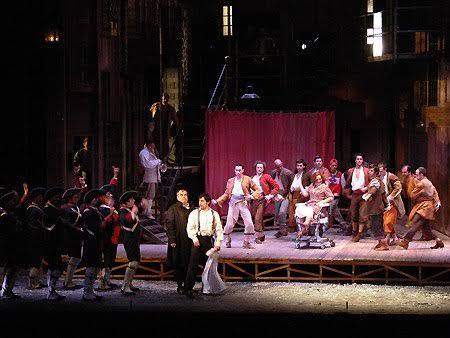
In Manila's Coliseo Artistico on Arroceros (formerly Veriadades) st. near Mehan Garden, the first zarzuela was performed in 1878. The first Filipino authors to compose this musical play in Spanish and their native languages were Pascual Poblete, Pedro Paterno, and Severino Reyes. Zarzuela is a Spanish lyric-dramatic genre in which spoken and sung scenes alternate, with the latter combining operatic and traditional songs as well as dance. In the Philippines, it is also known as sarswela/sarsuela and has a long history.
Time of Production: 1879
Artist: Pascual Poblete, Pedro Paterno, Severino Reyes
Region: Manila
Medium: Theatre
Location: Coliseo Artistico Arroceros, Manila
Resources: https://www.pressreader.com › philippines › manila-times
https://en.wikipedia.org/wiki/Zarzuela
American Era: Young Filipina

De la Rosa led the student body in petitioning the government to organize the quadrennial contest for the Madrid Art Academy pensionadoship in June of 1896. The authorities accepted the petition, but the Revolution put a stop to its execution for the next two years. Since the Second Revolution was on the verge of bursting in April 1898, the contest was seen as a futile exercise. Despite this, de la Rosa was awarded the scholarship at a time when the Spanish government was on the verge of falling apart.
Time of Production: 1928
Artist: Fabian Dela Rosa
Medium: Oil on Canvas
Location: Philippines, Manila
Resources: http://www.artesdelasfilipinas.com/archives/30/master-of-genre-fabian-cueto-de-la-rosa-1869-1937-
Japanese Era: Filipino Comfort Women

A statue of Filipina Comfort Women was on display along Baywalk, Roxas Boulevard in Manila. It was dedicated to the Filipino "comfort women" who served in military brothels during World War II, including those who were tricked into doing so. It was unveiled on December 8, 2017 and installed with the support of the National Historical Commission of the Philippines (NHCP) and other donors and foundations.After its installation in Manila, it has received both praise and criticism from interested groups and government agencies. The statue was taken down on April 27, 2018, sparking outrage. It was later stolen from Jonas Roces' private studio in Antipolo, Rizal, where it had been kept.
Time of Production: 1941 -1950
Artist: Jonas Roces
Material: Bronze
Medium: Sculpture
Location: Manila
Condition: Lost, Stolen
Resources: https://en.wikipedia.org/wiki/Filipina_Comfort_Women
Modern Era: Planting Rice

Fernando Amorsolo (1892-1972) was a major figure in the Philippines' visual arts in the decades leading up to World War II and into the postwar era. The painting 'Planting Rice with Mayon Volcano' depicts satisfaction despite the difficulties of planting rice. In their colorful clothes and straw hats, the Filipino villagers plant alongside a lush and green landscape. The quiet steam flume is hidden behind the Filipino villagers.
Time of Production: 1892 - 1974
Artist: Ferdinand Amorsolo
Material: Oil on canvas
Medium: Painting
Location: Metropolitan Museum of Manila
Resources: https://httppinoyartshub.wordpress.com/2017/12/31/planting-rice-by-fernando-amorsolo/
Contemporary Era: The Fishermen
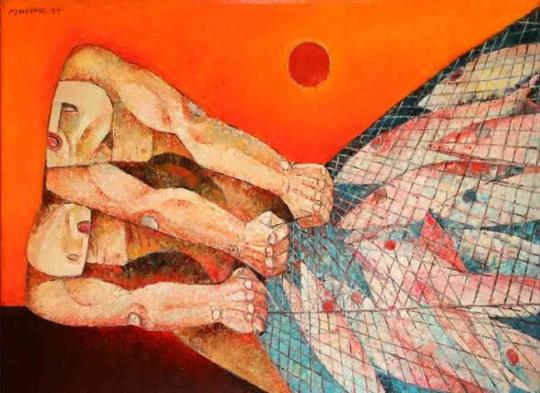
Ang Kiukok, a national artist and one of the most prominent exponents of Philippine figurative expressionism, developed a body of work that focused on a small group of subjects. In Ang's visual world, hope and struggle coexisted, and nowhere is this more evident than in his paintings of fishermen, of which he painted just a few. The struggle in the attenuated limbs and determined visages of the two human beings working together as they haul a net of plenty is tangible, emphasized by the diagonal action lines that converge in the middle of the canvas. As it hovers over this scene, a crimson sun, a favorite modernist compositional device, takes on new significance - an emphatic sign of constancy and eternal energy.
Time of Production: 1994
Artist: Ang Kiukok
Material: Oil, Wood
Medium: Painting, Mounted
Location: Davao
Resources: https://salcedoauctions.com/item/1317
4 notes
·
View notes
Text
**This film contains extremely graphic scenes of human suffering, please exercise caution when viewing.**
Compilation footage of Nazi concentration camps in the immediate aftermath of World War II. The footage was gathered by the US Department of Defense as part of the effort to conduct war crimes trials.
This copy was dubbed from a video copy at the National Archives in College Park, Maryland.
National Archives Identifiers:
ARC: 43452
NAIL: 238.2
Shotlist
Reel 1:
Army Lt. Col. George C. Stevens, Navy Lt. E. Ray Kellogg and U.S. Chief of Counsel Robert H. Jackson read exhibited affidavits which attest to authenticity of scenes in film. Map of Europe shows locations of concentration camps in Austria, Belgium, Bulgaria, Czechoslovokia, Danzing, Denmark, France, Germany, Isle of Jersey, Latvia, Netherlands, Poland and Yugoslavia. At Leipsig Concentration Camp, there are piles of dead bodies, and many living Russian, Czechoslovakian, Polish and French prisoners. At Penig Concentration Camp, Hungarian women and others display wounds. Doctors treat patients and U.S. Red Cross workers move them to German Air Force hospital where their former captors are forced to care for them.
Reel 2:
At Ohrdruf Concentration Camp, inspection team composed of Allied military leaders, members of U.S. Congress and local townspeople tours camp. Among them are Generals Dwight David Eisenhower, Supreme Headquaters Allied Expeditionary Forces commander; Omar Nelson Bradley; and George S. Patten. General Eisenhower speaks with Congressmen. They see bodies heaped on grill at crematorium and Polish, Czechoslovakian, Russian, Belgian, German Jews and German political prisoners. Col. Heyden Sears, Combat Command A, 4th Armored Division commander, forces local townspeople to tour camp. U.S. officers arrive at Hadamar Concentration Camp, where Polish, Russian and German political and religious dissidents were murdered. Maj. Herman Boelke of U.S. War Crimes Investigation Team (WCIT) examines survivors. Bodies are exhumed from mass graves for examination, identification and burial. Four-man panel interviews facility director Dr. Waldman and chief male nurse Karl Wille.
Reel 3:
At Breendonck Concentration Camp, Belgium, methods of torture are demonstrated. At Harlan Concentration Camp near Hannover, U.S. Red Cross aides Polish survivors. Allied troops and able-bodied survivors bury dead. At Arnstadt Concentration Camp, German villagers are forced to exhume Polish and Russian bodies from mass graves.
Reel 4:
At Nordhausen Concentration Camp, there are piles of bodies. Troops treat, feed and remove survivors who are mainly Polish, Russian and French. At Mauthausen Concentration Camp, Navy Lt. Jack H. Taylor stands with fellow survivors and describes his capture, imprisonment and conditions at Mauthausen. Volunteers bathe victims.
Reel 5: At Buchenwald Concentration Camp, Army trucks arrive with aid for survivors. Piles of dead, mutilated and emaciated bodies. Some survivors among dead. Huge ovens and piles of bone ash on floor of crematorium. Civilians from nearby Weimar are forced to tour camp. They see exhibits of lampshades made of human skin, and two shrunken heads.
R.6: British commander of Royal Artillery describes conditions at Bergen-Belsen Concentration Camp. German Army Schutzstaffel (SS) troops are forced to bury dead and aid survivors. Woman doctor, former prisoner, describes conditions in female section of camp. Belson commander Kramer is taken into custody. German guards bury dead. Bulldozer pushes piles of bodies into mass graves.
(Ps: ebből az emberbőrből varrott lâmpaernyő valszeg alaptalan, de ez a történtek mellatt jelentéktelen apróság
https://en.wikipedia.org/wiki/Lampshades_made_from_human_skin
After the defeat of Nazi Germany, claims circulated that Ilse Koch, wife of the commandant of Buchenwald concentration camp, had possessed lampshades made of human skin, and had specifically tattooed prisoners killed in order to use their skin for this purpose.[4] After her conviction for war crimes, General Lucius D. Clay, the interim military governor of the American Zone in Germany, reduced her sentence to four years' prison on the grounds "there was no convincing evidence that she had selected Nazi concentration camp inmates for extermination in order to secure tattooed skins, or that she possessed any articles made of human skin".

A két bemutatott zsugorfej (shrunken head) valszeg emberi eredetű és két lengyel hadifogolytól származik:
https://en.wikipedia.org/wiki/Kurt_Sitte
https://en.wikipedia.org/wiki/Ilse_Koch
https://www.ncbi.nlm.nih.gov/pmc/articles/PMC5388730/
5 notes
·
View notes
Text
Pluralistic: 02 Mar 2020 (Disasters vs dystopias, meet me in Kelowna, Cool Mules, astrosovkitsch, drug policy)

Today's links
My new podcast, "Disasters Don't Have to End in Dystopia": Tired: Look for the helpers. Wired: Be the helper.
The next frontier for school censorware is spying on kids all the time: It's how we'll stop ISIS, apparently.
I'm coming to Kelowna on March 5: It's my first-ever trip to the BC interior and more than half the (free) tickets are gone. RSVP now!
Cool Mules, an investigative series on a Vice editor's cocaine-smuggling ring: From the people who brought you the stunning "Thunder Bay."
Soviet Space Graphics: Cosmic Visions from the USSR.
Apple, Nike and Dell's supply chain includes enslaved Uyghurs: Xinjiang Phase II.
Drugs Without the Hot Air: The best book I've ever read on drugs and drug policy, in an expanded new edition.
This day in history: 2005, 2010, 2015, 2019
Colophon: Recent publications, current writing projects, upcoming appearances, current reading

My new podcast, "Disasters Don't Have to End in Dystopia" (permalink)
I just posted a new podcast! "Disasters Don't Have to End in Dystopia" is an essay I wrote for Wired about the ways that the stories we tell ourselves make the difference between rising to meet a crisis and devolving into catastrophe.
The podcast is here:
https://craphound.com/podcast/2020/03/01/disasters-dont-have-to-end-in-dystopias/
The Wired essay is here:
https://www.wired.com/2017/04/cory-doctorow-walkaway/
Though I wrote it in 2017, it really applies today. Our beliefs about whether we can trust our neighbors to have our back in times of crisis informs whether we behave in a way that shows THEY can trust US in times of crisis.
And since every crisis is (eventually) overcome by people pitching in to get things fixed, the belief that our fellow humans are untrustworthy means that crises are more likely to turn into disasters – and the stories we write can instil or dispel that belief.
I know that there's some controversy about Mr Rogers' famous "Look for the helpers" speech – that it's advice for children, not adults.
https://www.theatlantic.com/technology/archive/2018/10/look-for-the-helpers-mr-rogers-is-bad-for-adults/574210/
But the adult version is "BE the helper." That is, prepared to run towards the emergency, not to cower in a luxury bunker while better people than you get the machine started again.

The next frontier for school censorware is spying on kids all the time (permalink)
We spend a lot of time bemoaning the lack of privacy-consciousness among kids, and then we spy on them at school with censorware and punish them for taking any action that might protect their privacy from us.
https://www.youtube.com/watch?v=RAGjNe1YhMA
Meanwhile, censorware companies – whose primary customers have always been oppressive regimes seeking to control political oppositions – have morphed into full-on student surveillance companies, and their sales pitch is a terrifying slurry of war-on-terror/active shooter FUD.
When companies like Gaggle and Securely pitch school-boards on their products, they claim that they can detect incipient in-school ISIS attacks and the like, and use that as justification to spy on kids in-school and out-of-school online activities. These companies are mini-NSAs-for-hire, tracking social media usage and every keystroke and click on school networks and devices, storing it (insecurely) for years, if not decades.
https://www.thegazette.com/subject/opinion/staff-columnist/iowa-city-schools-student-social-media-monitoring-surveillance-gaggle-securly-20200302
They make bizarre claims ("the average 7th grader has 6 Instagram accounts" – which would make 7th graders 25% of the entire IG user-base). And they find terrified parents to endorse spying ("If it's going to protect my child, I don't care how you get the info, just get it"). People who sell security need to sell fear. If we want our kids to care about their privacy, we can't make them "safe" by spying on them all the time and banning any steps they take to make us stop.

I'm coming to Kelowna on March 5 (permalink)
I'm coming to the BC interior for the first time ever, talking about my book Radicalized at the Kelowna library as part of Canada Reads. I'm being hosted by the CBC's Sarah Penton from 6-8PM! It's free to attend but it's ticketed, and the majority of tickets are already gone — if you want to come, now's the time to RSVP.
https://www.eventbrite.ca/e/cbc-radio-presents-in-conversation-with-cory-doctorow-tickets-96154415445
(and if you can't make it, it's OK! The CBC will broadcast the audio and I'll put it my podcast, too)

Cool Mules, an investigative series on a Vice editor's cocaine-smuggling ring (permalink)
Back in 2015, Slava Pastuk was an editor at Vice, and he abused his position there to pressure young, desperate would-be journalists into smuggling suitcases full of millions of dollars' worth of cocaine into Australia.
https://nationalpost.com/news/former-vice-editor-gets-nine-year-sentence-for-recruiting-young-drug-mules-for-massive-cocaine-smuggling-ring
Five of them went to prison, but Slava Pastuk did not (at first). When Pastuk's role in the affair became public and he was indicted and tried, he refused to talk to the press at all, making the whole thing something of a non-story cipher (despite its spectacular details).
Incredibly, though, Canadaland got Slava to talk. At length. And they got the other side of the story, too, both from Slava's victims and those who risked career suicide by turning him down. The result is a new, six-part investigative series called Cool Mules, hosted by Kasia Mychajlowycz, whose work I discovered through the spectacular On The Media.
https://www.canadalandshow.com/shows/cool-mules/
It's modeled on Canadaland's last, spectacular miniseries, Thunder Bay, easily the best investigative series I ever listened to.
https://www.canadalandshow.com/shows/thunder-bay/
This morning's Canadaland features an in-depth, behind-the-scenes look at the making of the series between Mychajlowycz and Jesse Brown, and it has me licking my chops for the series itself.
https://www.canadalandshow.com/podcast/315-the-cocaine-smuggling-ring-at-vice/
Soviet Space Graphics (permalink)
When my grandmother was 12, she was inducted into the Leningrad civil defense corps during the 900 day siege of Leningrad (I wrote a science fiction novella about this called "After the Siege").
http://www.infinitematrix.net/stories/shorts/after-the-siege.html
The story is also available as a five-part audiobook reading by Mary Robinette Kowal:
http://scalzi.com/atseige/afterthesiege1.mp3 http://scalzi.com/atseige/afterthesiege2.mp3 http://scalzi.com/atseige/afterthesiege3.mp3 http://scalzi.com/atseige/afterthesiege4.mp3 http://scalzi.com/atseige/afterthesiege5.mp3
Eventually (years later) my grandmother was evacuated with the women and children across the winter ice and ended up in Siberia, where she met my grandfather, got pregnant, fled to Azerbaijan and birthed my father. They made their way to Canada over six years, through a series of refugee adventures and crises that could each be a novella of its own (the part where she married my grandfather's one-armed partisan fighter brother, for example, and got caught in a pogrom).
My grandmother completely lost contact with her family in Leningrad, for years. More than a decade. My father vividly recounts how he, as a little boy, heard his mother in Toronto answer the phone and say, "Mama, mama" and begin to cry for the family she thought was dead.
Over the years that followed, my grandmother and grandfather traveled to the USSR several times to see her family, and my Leningrad family came often to visit us in Toronto. Whenever they came, the brought Soviet space-program memoribilia.
There was SO MUCH of this stuff (in the early 90s, Russian sf fans used to pay their way to US conventions by shlepping suitcases full of astrosovkitsch to sell at the event), and it was gorgeous and magical. Some of the best art of the Soviet era was produced to celebrate the space program, and my most cherished toys and knickkacks growing up featured Sputnik, Gagarin, and Valentina Tereshkova. Today, much of that stuff is in our home, thanks in part to Ukrainian Ebay sellers who've taken over the astrosovkitsch market from Russian sf fans.
I'm awfully excited, therefore, by the news that Phaidon is bringing out "Soviet Space Graphics: Cosmic Visions from the USSR." It's a lavishly illustrated volume, produced in collaboration with the Moscow Design Museum.
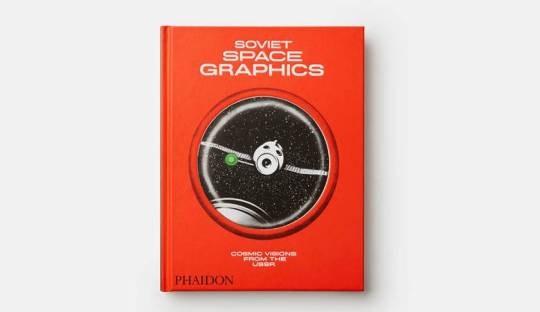
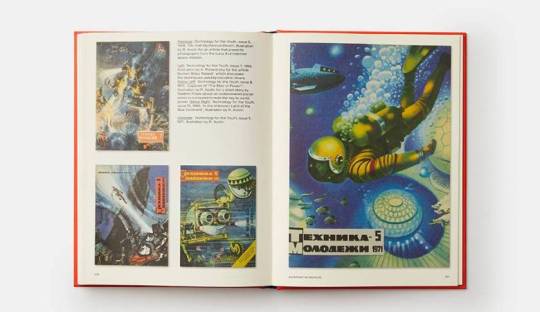
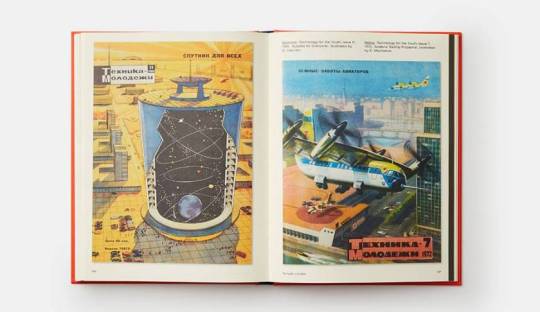




https://www.phaidon.com/store/design/soviet-space-graphics-9781838660536/
If you're ever in St Petersburg and you want to see some amazing historical examples of Soviet space and tech materials, visit the Popov Museum.
https://en.wikipedia.org/wiki/A.S._Popov_Central_Museum_of_Communications
Incidentally, my grandmother's baby brother Bora, who stayed behind in Leningrad, grew up to be curator of the Popov. I last saw Uncle Bora in 2005, shortly before his death, and he gave us a curator's behind-the-scenes tour of the museum. You can see my photos from the visit here:
https://www.flickr.com/search/?user_id=37996580417%40N01&sort=date-taken-desc&text=popov&view_all=1

Apple, Nike and Dell's supply chain includes enslaved Uyghurs (permalink)
Phase II of China's Xinjiang concentration camps for ethno-religious minorities (mostly Uyghurs but also other Muslim minorities) is creating slave-labor factories that serve major US brands.
https://www.bbc.com/news/world-asia-china-51697800
Nike, Apple and Dell's supply chains are all implicated.
As a reminder, the Xinjiang concentration camps used torture, punitive rape, brainwashing, forced medical experimentation and other tactics to "retrain" a disfavored minority.
"Between 2017 and 2019, the ASPI think tank estimates that more than 80,000 Uighurs were transferred out of the far western Xinjiang autonomous region to work in factories across China. It said some were sent directly from detention camps."
The revelations come from a report from the Australian Strategic Policy Institute:
https://www.aspi.org.au/report/uyghurs-sale
The workers enslaved in these factories spend their off-hours in brainwashing sessions, living "in segregated dormitories, with Mandarin lessons and 'ideological training', subjected to constant surveillance and banned from observing religious practices."

Drugs Without the Hot Air (permalink)
I first read "Drugs Without the Hot Air," David Nutt's astoundingly good book about drug policy back in 2012; in the eight years since, hardly a month has gone by without my thinking about it. Now, there's a new, updated edition, extensively revised, and it's an absolute must-read.
Nutt came to fame when he served as the UK "Drugs Czar" under the Labour Government in the late 2000s; especially when Home Secretary Jacqui Smith fired him for his refusal to lie and say that marijuana was more harmful than alcohol, despite the extensive evidence to the contrary (Smith also threatened Nutt for publishing a paper in Nature that compared the neurological harms of recreational horseback riding to harms from recreational MDMA use, a paper that concluded that if horses came in pill form we might call them "Equasy").
Since then, Nutt — an eminent psychopharmacologist researcher and practioner — has continued to campaign, research, and write about evidence-based drugs policy that takes as its central mission to reduce harm and preserve therapeutic benefits from drugs.
Like the first edition of Drugs Without the Hot Air, the new edition serves three missions:
First, to describe how a wide variety of drugs — benzos, cocaine, opoiods, cannabis, etc, but also alcohol, caffeine and nicotine — work in the body, in clear, nontechnical language that anyone can follow.
Next, to describe the harms and benefits of drugs, considered both on individual and societal levels — and also to describe what the best medical evidence tells us about maximizing those benefits and minimizing those harms.
Finally, to recount how governments — mainly in the UK but also in the USA and elsewhere — have responded to the evidence on drug mechanisms, harms and benefits.
Inevitably, part 3 becomes an indictment, as Nutt describes in eye-watering, frustrating, brutal detail how harmful, incoherent, self-serving and cowardly government responses to drugs have been, and how many lives they have ruined — through criminalizing harmless conduct, through treating medical problems as criminal ones, and through badly thought-through policies that caused relatively benign substances to be replaced with far more harmful ones (for example, Nutt traces the lethal rise in fentanyl partly to the successful global interdiction of opium poppies).
One important difference between the new edition and the original is visible progress on this last. In the years since Nutt was fired for refusing to lie about science, he has founded Drugscience, a research and advocacy nonprofit that has scored significant policy wins and made real therapeutic breakthroughs through hard work and rigour.
I don't think you could ask for a more sensible, clear-eyed, and useful book about drugs, from the ones your doctor prescribes to the ones your bartender serves you to the ones you can go to jail for possessing. Nutt is not just a great and principled campaigner, nor merely a talented and dedicated scientist — he's also a superb communicator.
Drugs Without the Hot Air is part of an outstanding series of technical books — mostly about climate change — that have greatly influenced my thinking. The publisher, UIT Cambridge, has several more that I recommend.

This day in history (permalink)
#15yrsago Media professors' SCOTUS brief on why P2P should be legal https://web.archive.org/web/20050910210056/http://www.nyu.edu/classes/siva/mediagrokster.pdf
#15yrsago Study: Used hard-drives full of juicy blackmail material https://web.archive.org/web/20051223054039/http://www.timesonline.co.uk/article/0,,2-1487674,00.html
#15yrsago Revolved: Beatles mashup album https://web.archive.org/web/20050221212052/http://www.hearingdouble.co.uk/ccc/
#15yrsago 1121 phrases you can't put on personalized jerseys at nfl.com https://web.archive.org/web/20050304035349/https://www.outsports.com/nfl/2005/0301nflshopnaughtywords.htm
#10yrsago Brits: tell the LibDem Peers not to bring web-censorship to Britain! https://www.openrightsgroup.org/blog/2010/lib-dems-seek-web-blocking
#10yrsago If chess were redesigned by MMORPG developers https://akma.disseminary.org/2010/03/if-chess-were-invented-by-mmog-developers/
#5yrsago America's growing gangs of armed, arrest-making, untrained rent-a-cops https://www.washingtonpost.com/local/crime/private-police-carry-guns-and-make-arrests-and-their-ranks-are-swelling/2015/02/28/29f6e02e-8f79-11e4-a900-9960214d4cd7_story.html
#5yrsago Bruce Schneier's Data and Goliath: The Hidden Battles to Collect Your Data and Control Your World https://boingboing.net/2015/03/02/bruce-schneiers-data-and-gol.html
#1yrago Man-Eaters: Handmaid's Tale meets Cat People in a comic where girls turn into man-eating were-panthers when they get their periods https://boingboing.net/2019/03/02/lycanthropes-v-patriarchy.html
#1yrago Massive study finds strong correlation between "early affluence" and "faster cognitive drop" in old age https://www.pnas.org/content/116/12/5478
#1yrago Comcast assigned every mobile customer the same unchangeable PIN to protect against SIM hijack attacks: 0000 https://arstechnica.com/information-technology/2019/03/a-comcast-security-flub-helped-attackers-steal-mobile-phone-numbers/
#1yrago Improbably, a Black activist is now the owner and leader of the "National Socialist Movement," which he is turning into an anti-racist group https://www.washingtonpost.com/dc-md-va/2019/03/01/how-black-man-outsmarted-neo-nazi-group-became-their-new-leader/?utm_term=.e5eb80c543cb
#1yrago Study that claimed majority of Copyright Directive opposition came from the US assumed all English-language tweets came from Washington, DC https://webschauder.de/wer-zwitschert-zum-eu-urheberrecht/

Colophon (permalink)
Today's top sources: Slashdot (https://slashdot.org), Dark Roasted Blend (https://www.darkroastedblend.com/) and Naked Capitalism (https://nakedcapitalism.com/).
Hugo nominators! My story "Unauthorized Bread" is eligible in the Novella category and you can read it free on Ars Technica: https://arstechnica.com/gaming/2020/01/unauthorized-bread-a-near-future-tale-of-refugees-and-sinister-iot-appliances/
Upcoming appearances:
Canada Reads Kelowna: March 5, 6PM, Kelowna Library, 1380 Ellis Street, with CBC's Sarah Penton https://www.eventbrite.ca/e/cbc-radio-presents-in-conversation-with-cory-doctorow-tickets-96154415445
Currently writing: I just finished a short story, "The Canadian Miracle," for MIT Tech Review. It's a story set in the world of my next novel, "The Lost Cause," a post-GND novel about truth and reconciliation. I'm getting geared up to start work on the novel now, though the timing is going to depend on another pending commission (I've been solicited by an NGO) to write a short story set in the world's prehistory.
Currently reading: Just started Lauren Beukes's forthcoming Afterland: it's Y the Last Man plus plus, and two chapters in, it's amazeballs. Last month, I finished Andrea Bernstein's "American Oligarchs"; it's a magnificent history of the Kushner and Trump families, showing how they cheated, stole and lied their way into power. I'm getting really into Anna Weiner's memoir about tech, "Uncanny Valley." I just loaded Matt Stoller's "Goliath" onto my underwater MP3 player and I'm listening to it as I swim laps.
Latest podcast: Disasters Don't Have to End in Dystopias: https://craphound.com/podcast/2020/03/01/disasters-dont-have-to-end-in-dystopias/
Upcoming books: "Poesy the Monster Slayer" (Jul 2020), a picture book about monsters, bedtime, gender, and kicking ass. Pre-order here: https://us.macmillan.com/books/9781626723627?utm_source=socialmedia&utm_medium=socialpost&utm_term=na-poesycorypreorder&utm_content=na-preorder-buynow&utm_campaign=9781626723627
(we're having a launch for it in Burbank on July 11 at Dark Delicacies and you can get me AND Poesy to sign it and Dark Del will ship it to the monster kids in your life in time for the release date).
"Attack Surface": The third Little Brother book, Oct 20, 2020.
"Little Brother/Homeland": A reissue omnibus edition with a very special, s00per s33kr1t intro.
18 notes
·
View notes
Text
Children Begging Food - Essay

Kollwitz was born in Königsberg, Prussia on July 8, 1867. Her skills in artistry were recognized by her parents and would later arrange her to take art lessons. During her teenage years, her works have been associated with the Realism movement, which would later then be one of her main themes throughout her body of works. She would later move to Munich, Germany in 1888 to study at the Academy of Women Artists. In 1891, she would then marry Dr. Karl Kollwitz and would move to Berlin, Germany where they would spend the majority of their lives there along with her children. She would soon pass on April 22, 1945, just a few days from the end of World War II in Moritzburg.
Kollwitz’s medium of her artworks has mostly been through the use of lithography and woodcuts. Growing up in a world where art is dominated by men, one of the recurring themes in her artwork is the representation of women. As a citizen who’s lived throughout the majority of the German Reich (Germany Empire - Nazi Germany), Kollwitz’s body of work also commonly had the portrayal of the working class, as seen with some of her works, such as The Weavers and The Peasant War.
The artwork of Kollwitz’s Children Begging Food does not have an exact date but can be implied that this was created around the early 1920s as we can see a similar style in her different artworks such as The Widow I and The Hunger which were created in 1923 and 1921 respectively. The medium of the piece is a lithograph, one of two mediums Kollwitz has consistently used since the 1890s. Therefore, we can suggest that these paintings occurred in the aftermath of World War I where Germany’s economic state was devastated due to the reparations needed for its country and at the same time, reparations ordered by other countries such as France.
The title Children Begging Food correlates literally to what the subject’s actions indicate which could be a certain instance seen in Germany during the aftermath of World War I. The work is in a grayscale spectrum (evidently in most, if not all of her works) which could signify a sense of mundaneness. As seen by the artwork, there is no background thereby giving its focus on the subjects itself. We could see the implied lines of the subjects all converging towards possibly another subject as justified towards their eye contact and also to where the bowls are directed towards. The cross-hatching of thick lines seen at the child at the bottom of the artwork could signify that their clothes are ragged, implying that they belong in the working class.
As mentioned earlier, we can see the children all looking upward possibly another subject who is out of frame. This shows a sense of submission towards someone more superior than the subjects in the frame. We can also see the contrast of both extremes of the grayscale within the subjects where the darkest shade is seen within the eyes of the children while the inside of their bowls practically has no shade which makes it the lightest shade of the piece. The darkest shade could signify their persistence and desire for food from someone whilst the lightest shade seen in their bowls shows how their bowls are seen with nothing, symbolizing their absence of wealth.
We thereby can conclude that the children’s means of survival are dependent on those surrounding them. In this print, we can see one of the several hardships Kollwitz showcased of the working class during her era. The aftermath of World War 1 threw Germany into an austere economic state and social disorder, thereby finding means of surviving throughout this period. This print is one of the many prints created by Kollwitz that highlights realities people lived through throughout this period. She then created a cycle of works named War (Krieg) to highlight what she called those “unspeakable difficult years” of World War I and its aftermath. In short, Kollwitz’s works of art have always been directed to the poverty and suffering experienced by the working class in Germany.
Based on my point-of-view, the reason that I picked this print is that there’s a form of resonation from this print in comparison to the Philippines at it’s present. The themes of Kollwitz unfortunately still prevails not only here in the Philippines, but too many other third-world countries. It is really disheartening to see these same social issues throughout different parts of the world today even more so that this piece of work is created approximately 200 years ago. Therefore, I believe this print still is important as the underlying message behind it is still relevant to this day. It serves a reminder to the fortunate that there are still people who don’t even have the luxury for the most basic of needs. This print serves as a reminder of the existence of inequality and injustice in today’s world which will hopefully serve as a wake-up call to pursue action and listen to those who are unheard.
References
“Children Begging Food.” Ateneo Art Gallery, 5 June 2020, ateneoartgallery.com/collections/ children-begging-for-food.
German Reich. 15 July 2020, en.wikipedia.org/wiki/German_Reich.
Hamerow, Theodore S., et al. “Germany from 1871 to 1918.” Encyclopædia Britannica, Encyclopædia Britannica, Inc., 15 July 2020, www.britannica.com/place/Germany/Germany- from-1871-to-1918.
“Käthe Kollwitz (1867 - 1945).” Käthe Kollwitz Museum Köln, www.kollwitz.de/en/biography. “Käthe Kollwitz: MoMA.” The Museum of Modern Art, www.moma.org/artists/3201.
“Weimar Republic.” History.com, A&E Television Networks, 4 Dec. 2017, www.history.com/topics/germany/weimar-republic.
2 notes
·
View notes
Text
The 1990s
A brief guide to the politics, music, television, and cinema that defined the decade
If you’re old enough to remember them, this is the website for you. If you are too young to remember them then this is also the website for you; a guide to the politics, music, television, film and fashion that shaped the United Kingdom and the world in the 1990s containing links to websites and documentaries.

(Former US President Bill Clinton, the birth of the internet, the Super Nintendo, these will all bring back memories for you if you remember the 1990s! If not, this is what it was like! Picture courtesy of the New York Times)
Politics

(Tony Blair, UK Prime Minister 1997 – 2007, standing outside No.10 having won the general election of May 1997, picture courtesy of Talk Radio website)
It was a decade that began with Margaret Thatcher in No.10 Downing Street and ended with Tony Blair, while in the United States by the end of the decade President George HW Bush had been replaced in the White house by Bill Clinton. This reflected passing of the torch from a generation shaped by World War II to that of the baby boomer generation born after it. What happened in between, from Thatcher’s downfall in 1990 through to the subsequent succession of John Major and election of victory of 1992 and the defeat of 1997 are shown all in the links below.
·YouTube links to the general election of 1992 - https://www.youtube.com/watch?v=p4YY7KWJAtA&t=2s
and of 1997 – https://www.youtube.com/watch?v=XoL_tT046tI
YouTube links to the Gulf War of 1991 - https://www.youtube.com/watch?v=8zQT5WB_nHE&t=1404s
Documentary about the Clinton years - https://www.youtube.com/watch?v=pGIpEURVn2c
Documentary series about the Major years – https://www.youtube.com/watch?v=8e4UZaMgIxE&t=160s https://www.youtube.com/watch?v=bee71Ersv1o&t=89s https://www.youtube.com/watch?v=k2akS9uLkCk
Music

(Oasis at Knebworth 1996 picture courtesy of NME)
It began with the Stone Roses at Spike Island with Stock, Aitken and Waterman dominating the charts; it finished with Steps and B*witched. What happened it between (Grunge, Britpop, Trip-hop, Dance, Girl Power are explained in the links below.
List of 1990s UK No.1 Singles - https://en.wikipedia.org/wiki/List_of_UK_Singles_Chart_number_ones_of_the_1990s
List of 1990s UK No. 1 Albums - https://en.wikipedia.org/wiki/List_of_UK_Albums_Chart_number_ones_of_the_1990s
Live Forever; The Rise of Britpop documentary (strong language) – https://vimeo.com/channels/366281/46153236
Spice Girls documentary - https://www.youtube.com/watch?v=mWbuFGNYx5U
Nirvana documentary - https://www.youtube.com/watch?v=3dg96TdaQ94
Oasis documentary Supersonic (strong language, as you can imagine!) http://www.documentarymania.com/player.php?title=Oasis%20Supersonic
Cinema

(Film posters of the 1990s, picture courtesy of Sporacle)
While it was films such as Titanic and Forest Gump that drew the most at the box office, it has to be remembered it wasn’t a bad decade for British cinema either! Having endured a fairly lame 1980s (in 1989, annual investment in film production was a meagre £104 million; by 1996, it stood at £741 million), hits such as Trainspotting, The Full Monty and The English Patient helped put British cinema on the map again.
List of the best British films from the 1990s - http://www.tasteofcinema.com/2014/the-15-best-british-films-of-the-1990s/
List of the best films from the 1990s - https://www.bfi.org.uk/news-opinion/news-bfi/lists/90-great-films-1990s
List of the highest grossing pictures - https://en.wikipedia.org/wiki/1990s_in_film
List of trailers - https://www.youtube.com/playlist?list=PLTT8GoH4BtdLaWW7hZS77IfFYwkWK-1Wc
Television

(Publicity shot of Friends, picture courtesy of Rotten Tomatoes)
In the US it was shows like the Simpsons, The X-Files and Friends that helped to define the era, the later show widely seen as defining the era in the same way that Cheers had done in the previous decade having bowed out in 1993.
The birth of lad culture and the rise magazines like Loaded was reflected in the popularity of the sitcom Men Behaving Badly but the girls could prove they could also be top of their game with Absolutely Fabulous.
By the end of the decade the panel show was in full swing with shows like NeverMind the Buzzcocks following in the footsteps of Have I Got News for You. In the world of soap opera the BBC launched Eldorado in 1992 but critical attacks and poor ratings led to its cancelation a year later. That decade would see EastEnders and Coronation Street battling for viewers.
Best TV shows of the 1990s - https://www.pastemagazine.com/tv/the-90-best-tv-shows-of-the-1990s/
Documentary about television in the US in the 1990s - https://www.youtube.com/watch?v=uYkutyMvMAc
Essay about American television in the 1990s - https://www.britannica.com/art/television-in-the-United-States/The-1990s-the-loss-of-shared-experience
Eldorado documentary - https://www.youtube.com/watch?v=T4yRYQmMsLU
History of the BBC in the 1990s - https://www.bbc.com/historyofthebbc/timelines/1990s
Fashion

(Picture courtesy of CNN)
Fashion in the 1990s was defined by a return to minimalist fashion and the rise of the supermodels, in contrast to the more elaborate and flashy trends of the previous decade.
In the early 1990s, several late 1980s fashions remained very stylish among both sexes. However, the popularity of grunge and alternative rock music helped bring the simple, unkempt grunge look to the mainstream by 1992. By 1994 this had all changed and grunge clothing rapidly declined as fashion became more feminine and form-fitting. Young women in the UK and America wore tailored skirt and trouser suits while men’s fashion was shaped by 1960s mod clothing and longer due to the success of Britpop. From the late 1990s onwards, American teenage girls imitated the look of British girl group All Saints, which consisted of baggy jeans, T-shirts, sweatshirts, tank tops, and trainers.
The anti-conformist approach to fashion led to the popularization of the casual chic look that included T-shirts, jeans, hoodies, and sneakers, a trend which continued into the 2000s. Additionally, fashion trends throughout the decade recycled styles from previous decades, notably the 1950s, 1960s and 1970s.
21 moments that defined 1990s fashion: -https://www.wmagazine.com/gallery/most-iconic-1990s-fashion-moments/
1990's Fashion History - The Mood of the Millennium https://www.fashion-era.com/the_1990s.htm
1990s fashion – A brief history of what we wore https://edition.cnn.com/style/article/1990s-fashion-history/index.html
THE ULTIMATE FASHION HISTORY 1990s https://www.youtube.com/watch?v=MOPcTZScYmk
The 20 Most Famous Supermodels of the '90s https://www.marieclaire.com/fashion/g2173/supermodels-of-the-90s/
1 note
·
View note
Photo



Fremantle Fortress was the combined coastal defences protecting Fremantle Harbour, Western Australia, since the mid-1930s and, predominantly, during World War II. The coastal defences of the Fremantle Fortress stretched along the coastline of Perth from Cape Peron to Swanbourne and also included installations on Garden Island and Rottnest Island. While the first coastal batteries of the future Fremantle Fortress were installed at Arthur Head in 1906, the military installations protecting the harbour were expanded in the 1930s, being eventually dismantled again by 1963.
During World War II, Fremantle Harbour, guarded by the Fremantle Fortress, was home to the Fremantle submarine base, which was the second-most important submarine base in the Pacific War.
The coastal batteries were manned by members of the Royal Australian Artillery, the Royal Australian Engineers and the Volunteer Defence Corps. Apart from these men, members of the Australian Women's Army Service also served at the Fremantle Fortress.
Of the former installations, the Oliver Hill Battery and its associated railway have been preserved, remaining a tourist attraction on Rottnest Island. Parts of the Leighton Battery, Buckland Hill, have been restored and its underground facilities are accessible. A bunker and one of the Panama mounts of the Peron Battery are also preserved and accessible.
https://en.wikipedia.org/wiki/Fremantle_Fortress
1 note
·
View note
Text
10 Japan Facts
Japanese Population Crisis
In Japan right now there’s a lot more elderly people as compared to children which spawns a big population crisis, in some towns there isn’t even a single child present. This is a big problem as over the years population has drastically decreased and will continue to do so throughout the years. “Japan’s population began to decline in 2011. In 2014, Japan’s population was estimated at 127 million; this figure is expected to shrink to 107 million (16%) by 2040 and to 97 million (24%) by 2050 should the current demographic trend continue. “.
This is all caused by the fact that Japanese life expectency is very long, around 88 years for women and 86 for men on average. This is due to much healthier diet consisting mostly of fishes and foods low on fats that is considered daily and normal along the Japanese people. Meanwhile many younger people decide on a lifestyle that is much more work centred, making for a massive amount of people less willing to start families, which takes us back to the fact there is a lot of elderly but not many children. “A pretty sad fact about Japan because it’s actually a big problem and there’s a lack of childbirth. The people don’t have time or money to have a family in today’s Japanese Society. And this has led to the situation where there are more seniors than children.”
https://en.m.wikipedia.org/wiki/Aging_of_Japan
https://www.swedishnomad.com/interesting-facts-about-japan/

Most Japanese Travel By Community Transport
Most Japanese people travel by the train rather than a car. Of course there are millions of people that drive but there’s no use for a car in the rural areas of Japan as people tend to walk everywhere or often ride a bike, and for longer distances just take the train as its way faster and less expensive. Keeping a car in such an area becomes an uneeded expense and most people there end up not even owning a car. It’s quite different in larger cities as there people own up to 2 cars per family but still end up using the train or the subway regardles as the trafic can get really bad within cities, and it could take twice the amount of time to drive somewhere rather than just walk over in many cases.
”Transportation in Japan is modern and highly developed. Japan’s transport sector stands out for its energy efficiency: it uses less energy per person compared to other countries, thanks to a high share of rail transport and low overall travel distances.” Due to the fact most people travel by train the Japanese railway system is very highly developed and modernised to support the needs of millions of people on daily basis. “In Japan, railways are a major means of passenger transport, especially for mass and high-speed transport between major cities and for commuter transport in metropolitan areas.” “Total railways of 27,182 km include several track gauges, the most common of which is 1,067 mm (3 ft 6 in) narrow gauge, with 22,301 km of track of which 15,222 km is electrified.” Also there’s a quite interesting fact that Japanese trains are almost never late, and have the highest punctuality score in the world. average daily delay is around 18 seconds, which is really impressive.
https://en.wikipedia.org/wiki/Transport_in_Japan

Traditional Clothing
Nowadays Japanese people tend to mostly wear Yukatas on special ocasions, Yukata is a cheaper alternative to a traditional Japanese Kimono, and while kimonos are made up of multiple layers of silks and fabrics with traditional stitchings and patterns, yukatas can have any pattern the customer can wish for and are much more cheaply made, usually mass produced by machines unlike kimonos that are to this day handmade. Kimonos are believed to originate from Chinese Hanfus but over the centuries they have adapted a different style that was much more suitable for the Japanese people. “Firstly, if you put the Kimono on the floor, you can easily find out that there is no curve on it. All the lines are straight, which means that once if you put it on, you will find out that it cannot show your figure at all. However, that is exactly what the Japanese ancestors want. They want to make themselves look calm, serious, and peaceful. On the contrary, Hanfu wants to show your figures in a positive way. It fits perfectly when you put it on and the curve will make you look prettier and thinner.”
http://chinesehanclothing.blogspot.com/2016/01/kimono-vs-hanfu.html

Koi Fish
Koi fish are very common in Japan as well as few other East Asian countries, they can be easily found in lakes and rivers and people very oftem put them in private ponds and aquarium displays. They are a normal fish, closly related to the European carp but because of their distinctive colours and patterns, have become a traditional Japanese symbol and a part of what the culture is known for. “Koi is an informal group name of the colored variants of C. rubrofuscus. Several varieties are recognized by the Japanese. Koi varieties are distinguished by coloration, patterning, and scalation. Some of the major colors are white, black, red, orange, yellow, blue, and cream. The most popular category of koi is the Gosanke, which is made up of the Kohaku, Taisho Sanshoku, and Showa Sanshoku varieties.”
Japanese people also breed Koi to achieve specific new species just like dogs are bred. People look for the biggest sizes and brightest colours, and fish with the most satisfying traits gets sold in millions of dollars.
https://en.wikipedia.org/wiki/Koi

Japanese Religion
“Shinto and Buddhism are Japan's two major religions. Shinto is as old as the Japanese culture, while Buddhism was imported from the mainland in the 6th century. Since then, the two religions have been co-existing relatively harmoniously and have even complemented each other to a certain degree. Most Japanese consider themselves Buddhist, Shintoist or both.
Religion does not play a big role in the everyday life of most Japanese people today. The average person typically follows the religious rituals at ceremonies like birth, weddings and funerals, may visit a shrine or temple on New Year and participates at local festivals (matsuri), most of which have a religious background.”
“Shinto does not have a founder nor does it have sacred scriptures like the sutras or the Bible. Propaganda and preaching are not common either, because Shinto is deeply rooted in the Japanese people and traditions.
"Shinto gods" are called kami. They are sacred spirits which take the form of things and concepts important to life, such as wind, rain, mountains, trees, rivers and fertility. Humans become kami after they die and are revered by their families as ancestral kami. The kami of extraordinary people are even enshrined at some shrines. The Sun Goddess Amaterasu is considered Shinto's most important kami.” It is said that the current Emperor of Japan is the 126th directly in line after Amaterasu and therefore a decentant of the Gods making him the rightful ruler of the land.
“Shinto is primarily found in Japan, where there are around 80,000 public shrines; the country's shrine organization claims 113 million adherents. Shinto is also practiced elsewhere, in smaller numbers. Only a minority of Japanese people identify as religious, although most of the population take part in Shinto matsuri and Buddhist activities, especially festivals, and seasonal events. This reflects a common view in Japanese culture that the beliefs and practices of different religions need not be exclusive. Aspects of Shinto have also been incorporated into various Japanese new religious movements. “
https://www.japan-guide.com/e/e629.html
https://www.japan-guide.com/e/e2056.html

Japan’s Geography
“Japan is an archipelago, or string of islands, on the eastern edge of Asia. There are four main islands – Hokkaido, Honshu, Shikoku and Kyushu. There are also nearly 4,000 smaller islands. Japan’s nearest mainland neighbors are the Siberian region of Russia in the north, and South Korea”
“Almost four-fifths of Japan is covered with mountains. The Japanese Alps run down the centre of the largest island, Honshu. The highest peak and Japan’s most famous mountain is Mount Fuji, a cone-shaped volcano considered sacred by many Japanese.”
Japan is known as ‘the land of the rising sun’ mostly due to the fact that its the furthest east out of every country in the world (exept Syberia which is a large part of Russia but practically nobody lives there due to the cold climate). In summer the sun raises before 4:30am in Japan.
https://www.natgeokids.com/za/discover/geography/countries/facts-about-japan/

Risk of Natural Disasters in Japan
Although Japan is pretty high north it can still be considered a tropical country for the most part considering it’s rather warm climate as well as massive forests as well as bambooforests which most would infact consider to be tropical. It is very close to Indonesia and this general region is known for multiple natural disasters. Japan is at a very high risk of hurricanes as well as typhoons, and even more for tsunamis as well as devistating earthquakes. Tsunamis are so often in japan the actual term “tsunami” originates from Japanese and would roughly translate to “large wave”
“Japan can be a dangerous place. Three of the tectonic plates that form the Earth”s crust meet nearby and often move against each other, causing earthquakes. More than a thousand earthquakes hit Japan every year. Japan also has about 200 volcanoes, 60 of which are still active.”
https://www.natgeokids.com/za/discover/geography/countries/facts-about-japan/

Cat Island and Bunny Island
Okunoshima: Bunny Island
“This small island was kept secret and off the maps during World War II when Japan produced poison gas on Okunoshima for chemical warfare against China. Where today's bunnies came from remains a mystery. Scientists debate whether they're descendants of test bunnies that were used at the poison gas factories, The Guardian reported.“
The Bunny Island is a popular location for tourists visiting Japan as it is the only place on Earth where the entire island is covered in rabbits. After the World War II it is believed that the scientists left the lab and released the bunnies into the island where they reproduced to populate the entire island. The animals have no natural predators within the island so their population massivly spiked to the point there is barely no plants or green areas left on the entire Bunny Island. Right now most of the rabbits depend on the tourists bringing them food and water and although on the outside this looks like the perfect visiting site most of the rabbits go malnourished or even starve to death. A lot of them also die due to infections as the island is heavily overpopulated and rabbbits tent to be really territorial even for pack animal standards causing a lot of fights mostly between the males that result in untreated wounds and infections.
Tashirojima: Cat Island
“The kitties were originally brought to the island to help with pest control on the island's silkworm farms. Many of Tashirojima's locals, most of whom are above 65 years old, believe feeding the hundreds of stray cats bring good luck and fortune.”
“In Japan's late Edo Period, much of the island raised silk-worms for their textiles. The residents kept cats to chase the mice away from their precious silk-worms. Over time, this cat population left un-neutered began to grow immensely while the human population dwindled down to fewer than 100 residents. As of today, the feral cat population outnumbers humans 6 to 1 on this small Japanese Island.”
https://en.wikipedia.org/wiki/Tashirojima
https://abcnews.go.com/Lifestyle/bunny-island-fox-village-cat-island-japans-paradises/story?id=28830838

Gion Matsuri Festival
“Arguably, this is known as the mother of all Japanese celebrations. This festival began as part of a purification ritual to appease the gods thought to cause fire, floods and earthquakes… Eeps. The event itself is so popular, that it gets celebrated for the whole month of July with something different happening nearly every day. It’s a huge event in Kyoto culture and loved by locals and tourists alike, with the favourite events held on 17th and 24th July. For visitors, the most enjoyable part of the festival is the “Yoi-yama” events held on the three evenings preceding the main float processions.”
https://www.rickshawtravel.co.uk/blog/our-top-6-famous-festivals-in-japan/

Summer Olympics Tokyo 2020
“The Tokyo Olympics 2020 is ramping up and sports fans from all around the world will be heading to Japan for a once-in-a-lifetime experience. With all the people attending and involved in putting on such a large scale event, it might not be the best time to visit if you’re interested in really diving into Japanese culture. Expect hotels to be filled to the brim and prices to go up a bit. But, if you’re a sports enthusiast heading there for the big show, here’s our handy guide for making the most out of Japan while you’re at it! “
Tokyo has been selected to host the summer olympics this year way back in 2013 shortly after the London olympics of 2012. This wil be Japans secod time ever hosting the Olympics since 1964.
https://www.bookmundi.com/t/tokyo-olympics-2020-everything-you-need-to-know

2 notes
·
View notes
Photo




Sunday Nite
Dear Pop,
Wrote small section of the “community letter” this afternoon. (1)
Cont. Monday
Last nite, as I just got started on this, word came through the grapevine that the O.D. (2) was really inspecting and being quite nasty. So was all ducked our letters and got studying. Ordinarily, they don’t say anything if you are writing letters, but this guy was a new 2nd L. And I guess he was a little scared.
Had an interesting trip to State Police H.Q. at Trenton this afternoon. We just got back. Had quite a talk with the ballistics expert. (3) That’s dog gone interesting work. They had quite an arsenal of pistols there. Everything from toy guns to a Germ. Mauser (4), which really looks like a weapon.
The trip to Newark was very nice in some respects and sort of boring in others. (Better not repeat to Mom.)
Sat. Morning at Radio City was the only chance I had to talk to Bertie alone, and you can’t very well talk in a theatre. (5) On Sunday, Hedwig (6) had Millie & Carrie (7) and Eleanor Koenig (8) over for dinner. Everything resolved itself to M & C & H. Talking about their trips and Bertie and me not getting a chance to even yawn. But the folks were all swell to us in their own way. Bertie got a lot of swell presents from everyone as you can imagine.
Some silly jerk just decided that we should have gas mask drill on our own time tonight. It makes me sore. We have little enough time as it is and why the hell they don’t let us alone is beyond me. Any dumb jerk that can’t get his mask on in 15 seconds deserves to be gassed anyway.
The grind here is tough, but I think it is the uncertainty of everything plus the futility of it that gets most of us.
As I have said before, the guys here fall into about three rough groupings. 1) This is one bunch that is scared silly to be sent to combat and will do most anything to keep out. [redacted] 2) A bunch of guys who for various reasons would never be any good in combat anyway (I-B’s older fellows) 3) Another bunch of us who are young, active and physically fit who are itchy and want to see some chance for advancing or at least a goal somewhere. So far, we have been offered nothing as a reward for grinding like hell around here. There are some who say “You should be happy to have the opportunity to just study” But I don’t go for that. The only reason I ever studied or ever wanted to study was so I could advance along some lines, then I lose interest. And that is just what is happening to a lot of guys around here.
In spite of the WCTU (9), I agree with you as to drinking as a means of relaxation (10). And as long as it does not interfere with other duties, I think it is O.K. In fact, the army says that a man over 20 who says he never drinks is a misfit. (11) That was one of the questions asked of the O.C.S. (12) group from Croft. Do you drink? Those who hesitated were thrown out immediately. Those who said “Yes” were not quizzed further. Those who said “No” were asked “Why not?”
Once in a while, a few of us go over to the Nassau Tavern (13) for a beer or a high ball. But as is the general case in the army (with privates anyway) the cost is too great. So the drinking is limited.
Thanks very much for the [unclear](14). At the rate I’m going it isn’t going to take too long to finish these up. I like that variety.
As far as money is concerned, I’m O.K. Costs a great deal more here than in camp. About $2.00 (15) weekly for uniforms and laundry. Won’t be able to save quite as much (16).
Well, have to fall out with gas masks now.
Love, Henry
Whatever this was, was neither explained further nor enclosed
I think this means Officer on Duty.
Great Niece who falls asleep listening to true crime podcasts is sitting here like - https://images.app.goo.gl/dXVTJ4Cqbr8U8qUTA
Even pre 1945 there were 16 different kinds of Mauser, more specificity please - https://en.wikipedia.org/wiki/Mauser
If only that were still true!! **sigh**
AKA, “Cousin Hattie”
Not 100% sure who they are and they’re not showing up on my extensive family tree, but I kinda recognize the names.
Ugh, again Koenig is a family name but not showing up on my tree. Sigh…
Contextually, I’m going to go with Women’s Christian Temperance Union - https://en.wikipedia.org/wiki/Woman%27s_Christian_Temperance_Union
“Cheers” says his great niece, lifting her evening glass of Shiraz. (Bear in mind, however, that prohibition was only repealed about 10 years prior, so this was all a bit more debatable at the time.)
I didn’t even try to verify the authenticity of that statement - instead have this fascinating summary of the attitude toward drinking in WWII - https://warontherocks.com/2015/06/a-farewell-to-sobriety-part-two-drinking-during-world-war-ii/
Officers Candidate School
I think, this might possibly still exist, maybe? https://www.nassauinn.com/dining/
I have stared at this for 5 minutes and can’t even figure it out contextually.
$29.75 - according to Business Insider, the average yearly dry cleaning bill is $500, which boils down to $9.62 a week - quite a difference. But, when you’re stuck in a dorm in 1943, with limited laundry options . . .
Sadly, one thing I did not inherit is the New England parsimony. I could learn a bit here.
#princeton#new jersey#radio city music hall#WCTU#wwii#world war 2#basic training#army#letters#handwriting
1 note
·
View note
Text
Jackie Ormes: A Cartoonist Ahead of Her Time
“I have never liked dreamy little women who can't hold their own." –Jackie Ormes
Jackie Ormes is best known as a trail-blazing African-American cartoonist, but she was also a journalist and a civil rights activist. She created two extremely different comics that were seen in newspapers published expressly for African-American readers. Prior to World War II these readers followed the romances of adventuress Torchy Brown, but after the War, Miss Ormes’s single panel comic Patty-Jo ‘n’ Ginger provided biting social commentary through an outspoken six-year old named Patty-Jo.
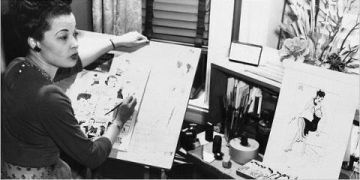
Jackie Ormes working on Torchy Brown sketches in her studio (c. 1950). Photographer unknown. Image source.
Jackie Ormes Gets Her Start
Jackie Ormes was “born on August 1, 1911, in Pittsburgh, Pennsylvania”(1) as Zelda Mavin Jackson. Her father, William Winfield Jackson ran a movie theater and had owned a printing company in Pittsburgh. After he was killed in an automobile accident in 1917, young Zelda and her sister went to live with an aunt and uncle. After her mother remarried, the girls moved with her and her new husband to Monongahela, outside of Pittsburgh.(1)
Throughout high school Jackie, an avid artist and cartoonist, became the arts editor for her high school year book.(1) Her correspondence with the editor of The Pittsburgh Courier, “a weekly African American newspaper that came out every Saturday”(2) led to her first assignment, as a proofreader. Jackie’s talent and hard work soon earned her reporting assignments covering everything from human interest stories to local boxing matches.(1)
In 1936, Jackie met and married businessman Earl Ormes.” Sadly, the couple “lost their only child, Jacqueline, to a brain aneurysm at age 3”(3).
Torchy Brown: “From Dixie to Harlem”
On May 1, 1937 The Pittsburgh Courier became the first newspaper to publish a comic strip written and drawn by a woman of color. (1) On that date Torchy Brown in “From Dixie to Harlem” first appeared in the paper. The strip followed the adventures “of a young country girl who moves from Mississippi to New York City in order to make it as a lounge singer at the famed Cotton Club”(2). While Torchy Brown was written with a humorous tone, the story line “mirrored the journey of many African-Americans who ventured northward during the Great Migration”(1).
The Torchy Brown series “was not syndicated in the usual sense” (1), The Pittsburgh Courier had over a dozen regional editions that were published in cities across the United States. In this way, Jackie’s work had exposure to millions of readers (3).
The Torchy Brown strip only ran for one year. No one knows exactly why the strip didn’t run longer, but there is some speculation that Ormes’s contract with The Courier had ended. Perhaps another reason was that Jackie’s husband, Earl had been offered a job in Chicago (4).
Jackie Ormes: “From Pittsburgh to Chicago”
In Chicago, Earl Ormes became a successful manager in the hotel business, first managing “the DuSable Hotel and later … the more upscale Sutherland Hotel”(4). Once settled in Chicago, Jackie was active in “the music, fashion and artistic communities of Chicago”(4). She had not, however, lost interest in her journalism. Based on her work at The Pittsburgh Courier, she persuaded the editor of one of Chicago’s African-American newspapers, The Chicago Defender to hire her (4).
In 1945, Jackie Ormes returned to cartooning with a one panel strip in The Defender called Candy. The strip “featured a curvaceously-drawn housemaid who wisecracked about her unseen employer and borrowed clothes from her boss’ wardrobe” (4). Unfortunately, Candy was also short-lived, running about four months from March to July (1), and then Ms. Ormes went back to special assignment work for the paper (3).
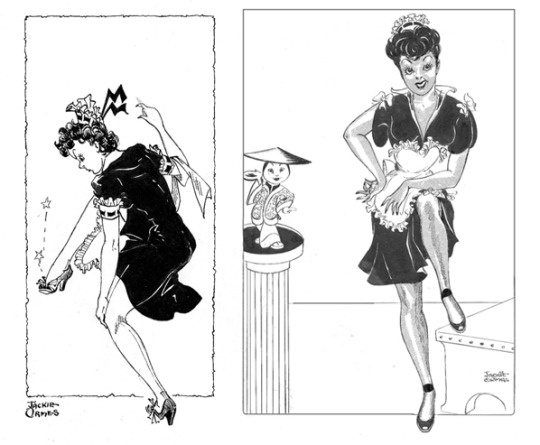
Jackie Ormes. Candy character (1945). Image source.
Patty-Jo ‘n’ Ginger
Later in 1945 Jackie Ormes, introduced her most successful and longest running comic Patty-Jo ‘n’ Ginger selling it to her old employer, The Pittsburgh Courier. The strip features the brash and outspoken six-year-old Patty-Jo and her silent sounding board older adult sister Ginger. “Despite her age, Patty-Jo has both a ‘smart mouth’ and keen insights into” (4) the racial situation in the United States during that time.
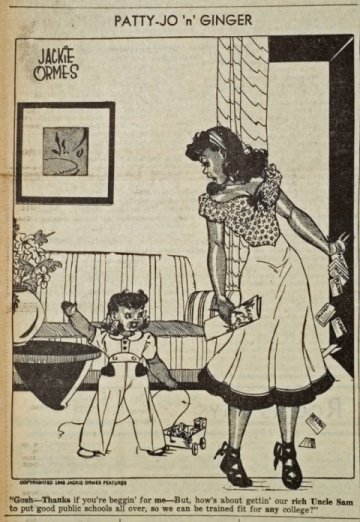
Jackie Ormes, Patty-Jo ‘n’ Ginger comic (1948). Image source.
The comic’s popularity led Ms. Ormes in 1947 to market a “Patty-Jo” doll. She “contracted with the Terri Lee doll company … to produce a play doll based on her little girl cartoon character” (1). The doll was popular with both black and white children (1).
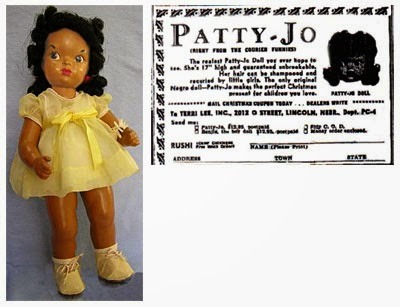
Jackie Ormes, Patty-Jo Doll with order form (1947). Image source.
The Return of Torchy Brown
In August 1950 The Pittsburgh Courier started publishing “an eight-page color comics insert” (1) which gave Ms. Ormes the opportunity to reprise her Torchy Brown character of 1937 in the strip Torchy in Heartbeats. The new Torchy strip also featured a Torchy paper doll with costumes that demonstrated Ms. Ormes’ talent as a fashion designer. Unlike the Torchy of the 1930s, the resurrected Torchy “was confident, intelligent, and brave” (1) unlike the usual stereotype of African American women at the time. Like Patty-Jo ‘n’ Ginger, Ms. Ormes used Torchy to spotlight controversial issues “everything from race to sex to environmental pollution” (1). During this time, Ms. Ormes support for civil rights and other leftist political issues subjected her to an investigation by the FBI during the McCarthy Era (1,2).
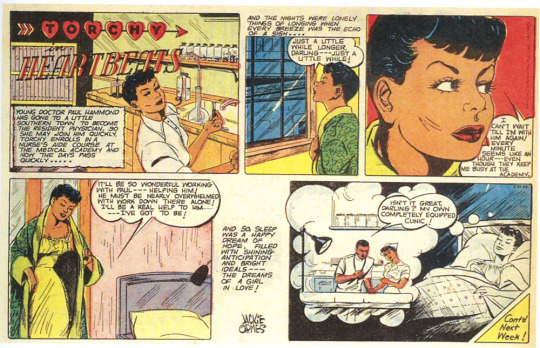
Jackie Ormes, Torchy in Heartbeats comic strip (1952). Image source.
Jackie Ormes Later Years
The last installment of Patty-Jo ‘n’ Ginger ran on September 22, 1956, and it has been speculated that “editorial changes within The Pittsburgh Courier (4)” led Ms. Ormes to retire from cartooning. Although her cartooning days were over, she continued to remain artistically active working on still life paintings, portraits, and murals until the mid-1960s when painful arthritis caused her to stop. She did continue to contribute to many Chicago non-profit organizations with volunteer work and fundraising efforts. One of her most prestigious positions was on the board of directors for the DuSable Museum of African American History. Ms. Ormes was also an avid doll collector with over 150 dolls in her collection. (1)
Jackie Ormes’s Legacy
In 1976 Jackie Ormes’s husband Earl died after forty years of marriage. (1) Ms. Ormes died in Chicago on the day after Christmas in 1985.(4) In 2007 Cheryl Lynn Eaton, writer and cartoonist, founded The Ormes Society, which promotes black female comics artists; the following year a biography of Ms. Ormes was written and published by Nancy Goldstein.(2) In 2014 Ms. Ormes was posthumously inducted into the National Association of Black Journalists Hall of Fame. On September 1, 2020, a Google Doodle commemorated Ms. Ormes and her work. (1) Filmmaker Susan Reib is currently working on a film based Miss Ormes’ life and her Torchy Brown comics.(5)
Through her artistic talent combined with courage and independence, Jackie Ormes was able to influence both the civil rights and womens’ rights movements in a way that no other artist could. Her work continues to inspire contemporary artists and activists.
References
Wikipedia, (10 September, 2020). Jackie Ormes. https://en.wikipedia.org/wiki/Jackie_Ormes
Women in Comics, (n.d.). Jackie Ormes. https://womenincomics.fandom.com/wiki/Jackie_Ormes
Pitts, V., (1 April, 2013). Zelda “Jackie” Ormes, (1911-1985). Blackpast.org web site. https://www.blackpast.org/african-american-history/ormes-zelda-jackie-1911-1985/
Letizia, A., (22 January, 2014). Jackie Ormes and African American Comic Strips. Geek Frontiers web site. https://geekfrontiers.com/pittsburgh-history/jackie-ormes-and-african-american-comic-strips
Reib, S. (n.d.), The Jackie Ormes/Torchy Brown Project. https://www.torchybrown.com/
Further Reading
Goldstein, Nancy (2008). Jackie Ormes: The First African American Woman Cartoonist. Ann Arbor: University of Michigan Press. ISBN 978-0-472-11624-9. OCLC 1176131351
23 notes
·
View notes
Photo



Richard III in the 1930s, 1995
Richard III is a villain as he himself announces in his first speech in the play by Shakespeare. It is a disturbing story no matter which decade they place it in, but the 1930s saw the rise of fascism and the start of World War II. Ian McKellan makes Richard into a manipulative and frightening figure, and the rest of the cast is excellent. So, it is a good movie, but not the easiest way to enjoy women’s fashions from the 1930s.
On the other hand, the costume designer Shuna Harwood was nominated for an Academy Award for her work here, and the women characters, who are all having a terrible time, mind you, get to wear luxurious dresses and hats because they are all members of royal households. She uses bias-cut dresses, slit and lined sleeves, flared circular sleeves, and all the other looks common to the 1930s. Watching the women move across the screen is a treat. You see here, Annette Bening in a plum-colored evening gown. Then, Kristen Scott Thomas in the red hat and dress, and Bening again in the purple hat which is worn with a print silk dress at the seaside.
You can learn more about the film here: https://en.wikipedia.org/wiki/Richard_III_(1995_film)
#richard III#ian mckellen#annette bening#kristen scott thomas#shuna harwood#costume design#1930s#1930s fashion#vintage fashion#costume history#fashion history#dress history#shakespeare
5 notes
·
View notes